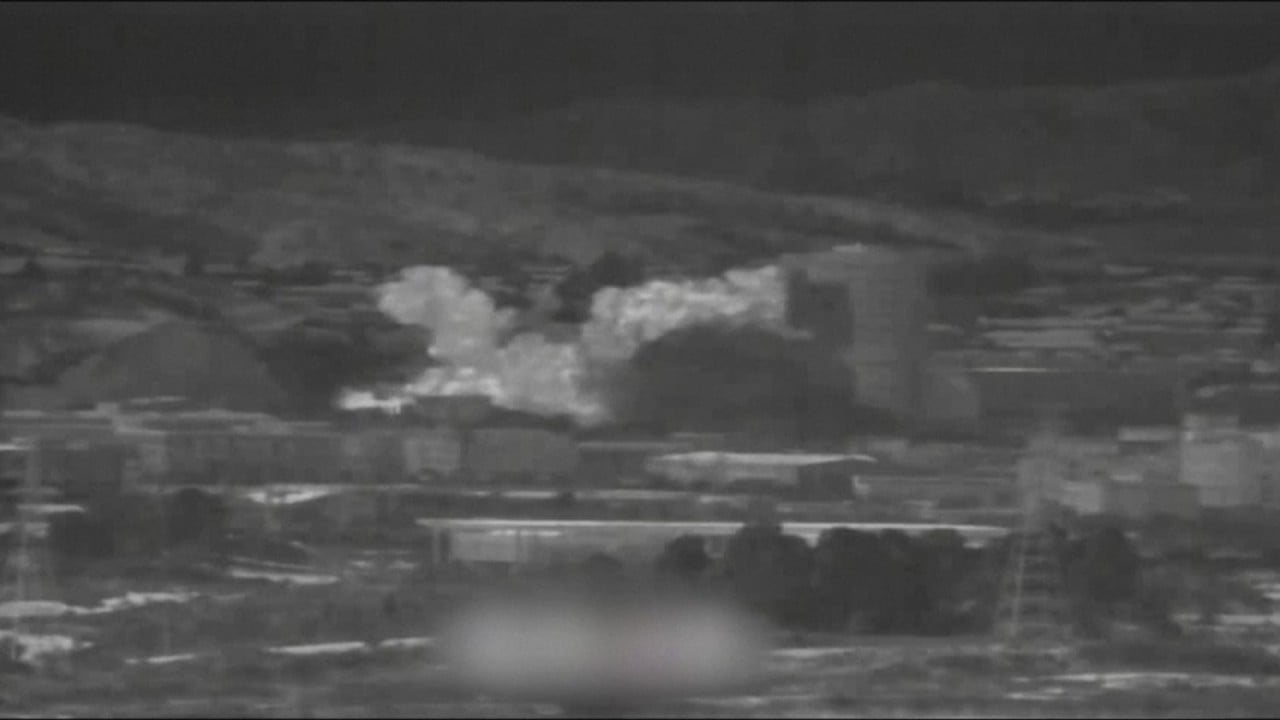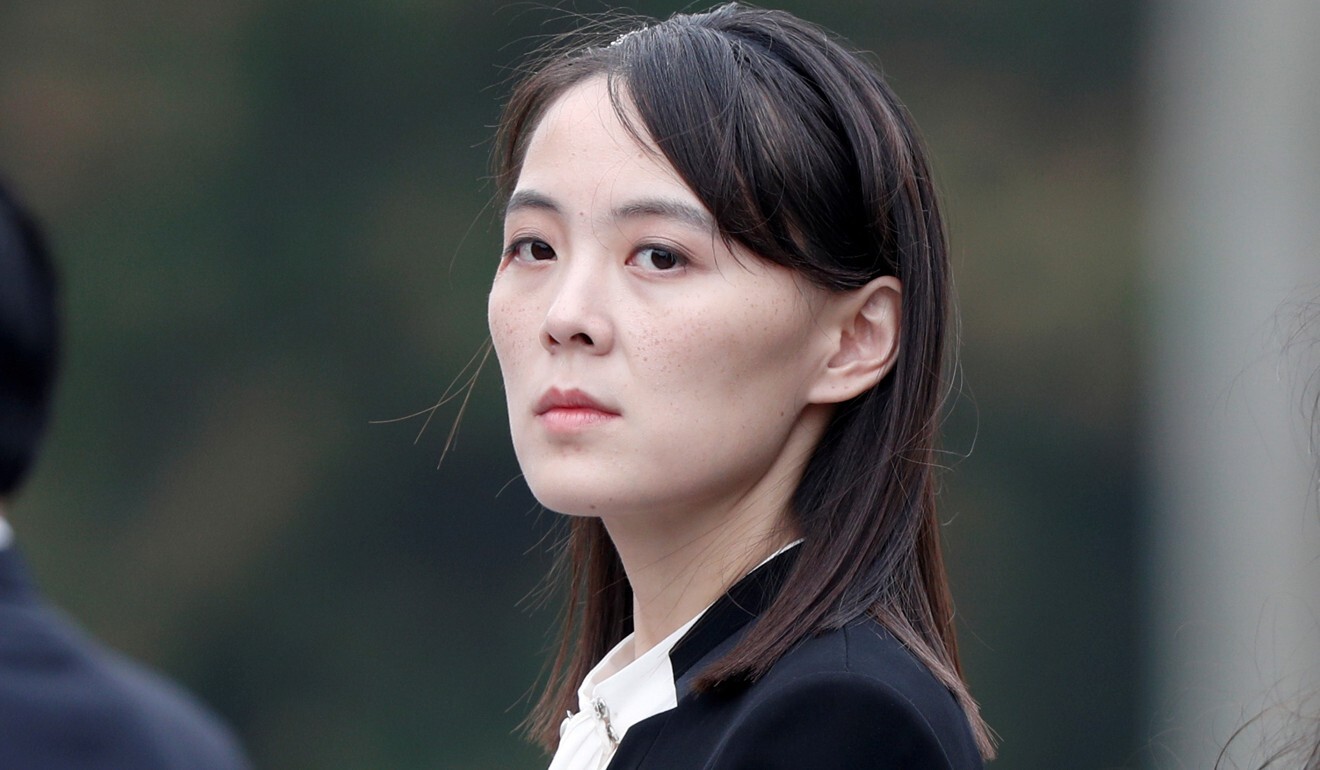
02:44
North Korea ‘blows up’ inter-Korean liaison office in Kaesong

North Korea blew up an inter-Korean liaison office on its side of the border on Tuesday, the South’s Unification Ministry said, after days of increasingly virulent rhetoric from Pyongyang.
“North Korea blows up Kaesong Liaison Office at 14:49,” the ministry, which handles inter-Korean relations, said in a one-line alert sent to reporters.
The statement came minutes after an explosion was heard and smoke was seen rising from the long-shut joint industrial zone in Kaesong where the liaison office was located.
The destruction of the liaison office came after Kim Yo-jong, the powerful sister of North Korean leader Kim Jong-un, said at the weekend: “Before long, a tragic scene of the useless north-south joint liaison office completely collapsed would be seen.”

02:44
North Korea ‘blows up’ inter-Korean liaison office in Kaesong
The North’s Korean Central News Agency confirmed the liaison office building had been “tragically ruined with a terrific explosion”.
It said the demolition was carried out, “corresponding to the mindset of enraged people to surely force human scum and those, who have sheltered the scum, to pay dearly for their crimes”.
North Korea often describes defectors in the South as “human scum”.

Since early June, North Korea has issued a series of vitriolic condemnations of the South over activists sending anti-Pyongyang leaflets over the border – something defectors do on a regular basis.
Last week, it announced it was severing all official communication links with South Korea and labelled its neighbour an “enemy”.
The leaflets – usually attached to hot air balloons or floated in bottles – criticise North Korean leader Kim Jong-un for human rights abuses and his nuclear ambitions.
Park Sang-hak, a leading figure behind the leaflets, refused to comment on the explosion. “I don’t care about the demolition at all. Don’t ask me. Ask the crazy boy Kim Jong-un,” he said.

Analysts say Pyongyang may be seeking to manufacture a crisis to increase pressure on Seoul while nuclear negotiations with Washington are at a standstill.
Earlier on Tuesday, North Korea’s army said it was “fully ready” to take action against the South, including re-entering areas that had been demilitarised under an inter-Korean agreement.
“North Korea is frustrated that the South has failed to offer an alternative plan to revive the US-North talks, let alone create a right atmosphere for the revival,” said Cheong Seong-chang, a director of the Sejong Institute’s Centre for North Korean Studies. “It has concluded the South has failed as a mediator in the process.”
Yoon Sung-suk, a political-science professor at Chonnam National University, said the North was trying to punish the South’s President Moon Jae-in for sticking to US-led sanctions despite a 2018 agreement that called for peace, economic prosperity and reunification.
“The North is hitting Moon for his failure to move forward and for sticking to sanctions,” Yoon said.
“The North also needs an easy scapegoat – the South – to deflect attention away from its economic hardship, which has been worsening due to the coronavirus outbreak,” he said. “This is also an indirect message to the US that the North is prepared to go to extremes in sticking to its stance that it won’t disarm itself without sanctions relief.”
Chinese Foreign Ministry spokesman Zhao Lijian told a daily briefing after the incident that the country hoped for peace on the Korean Peninsula. He did not mention the liaison office.
China is North Korea’s main benefactor and trade partner.
The US State Department said Washington fully supports Seoul’s efforts on inter-Korean relations and urged Pyongyang to “refrain from further counterproductive actions”.
Daniel Russel, the top US diplomat for East Asia until early in Trump’s administration, said: “Ramping up pressure through escalating provocations is how Kim makes the point that without sanctions relief, sooner or later he will also blow up Trump’s claim to have ‘ended the threat’ from North Korea.”
The EU on Tuesday warned North Korea against taking further “provocative and damaging steps”.
“The European Union strongly regrets the recent actions by the Democratic People’s Republic of Korea,” the bloc said in a statement, which added that the North’s recent actions “raise tensions, destabilise the situation and undermine efforts towards a diplomatic solution on the Korean Peninsula”.
Russia also expressed concern about the Korea situation, urging restraint from all sides.
The one-month dollar-won non-deliverable forwards rose 0.4 per cent to 1,212.36, implying the local currency will be weaker when onshore markets reopen on Wednesday, Bloomberg reported.
“This probably isn’t enough to derail the broader risk rally today,” said Eddie Cheung, a strategist at Credit Agricole SA in Hong Kong. “But the geopolitical considerations around Korean assets are likely to rise a bit as this marks an active step (and not just a threat) toward cutting ties.”
The 1953 Armistice Agreement that ended fighting in the Korean war led to a 4km-wide DMZ buffer being established across the peninsula.
North and South Korea have about 1 million troops stationed near their ends of the buffer zone, making it one of the most heavily fortified borders in the world. No peace treaty has been signed but there is a ceasefire in place.
The opening of the liaison office in 2018 was part of a series of moves by the Koreas to reduce tensions during a global diplomatic push to resolve the nuclear stand-off with the North. At the time, the Koreas also resumed temporary reunions between war-separated relatives and reached military agreements to reduce tensions across the border.
Kaesong was also home to an industrial estate for joint projects arising out of the inter-Korean summit in 2000 between then-South Korean president Kim Dae-jung and the late North Korean leader Kim Jong-il, the father of the current leader.
In 2016, the South’s conservative then-president Park Geun-hye unilaterally closed the symbolic Kaesong industrial estate in response to the North’s nuclear and missile tests.
Additional reporting by Bloomberg and Reuters